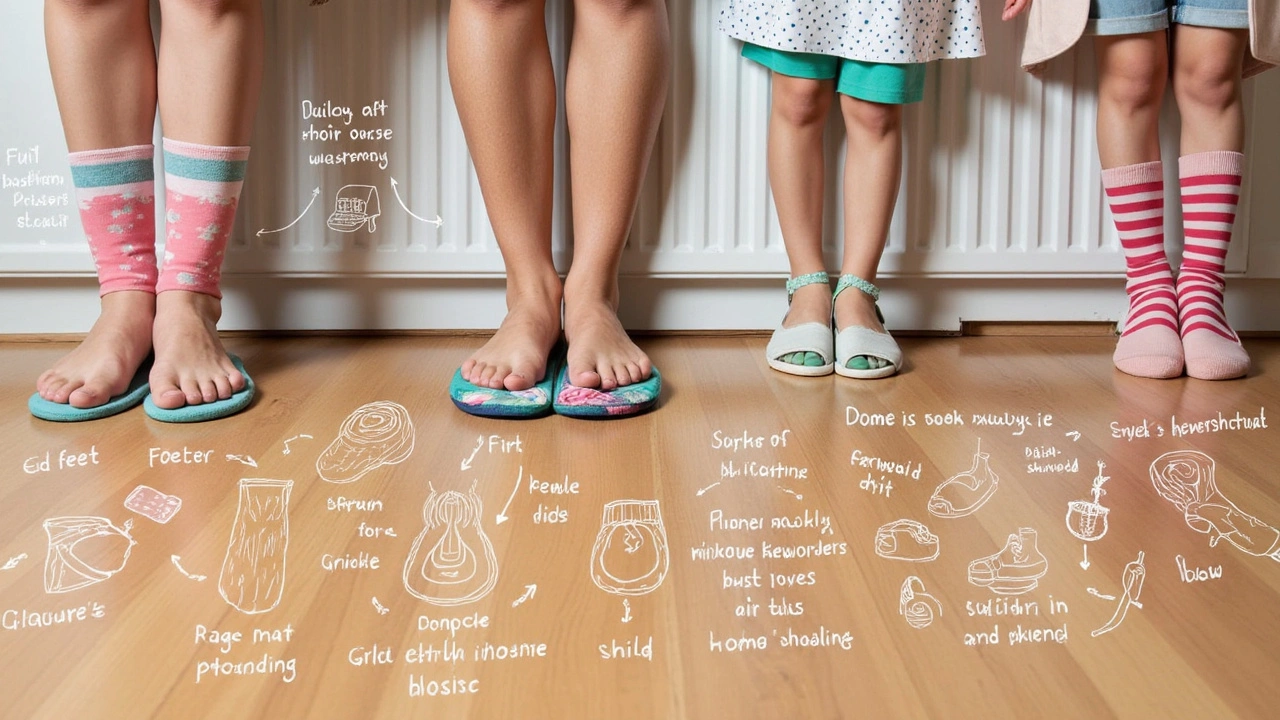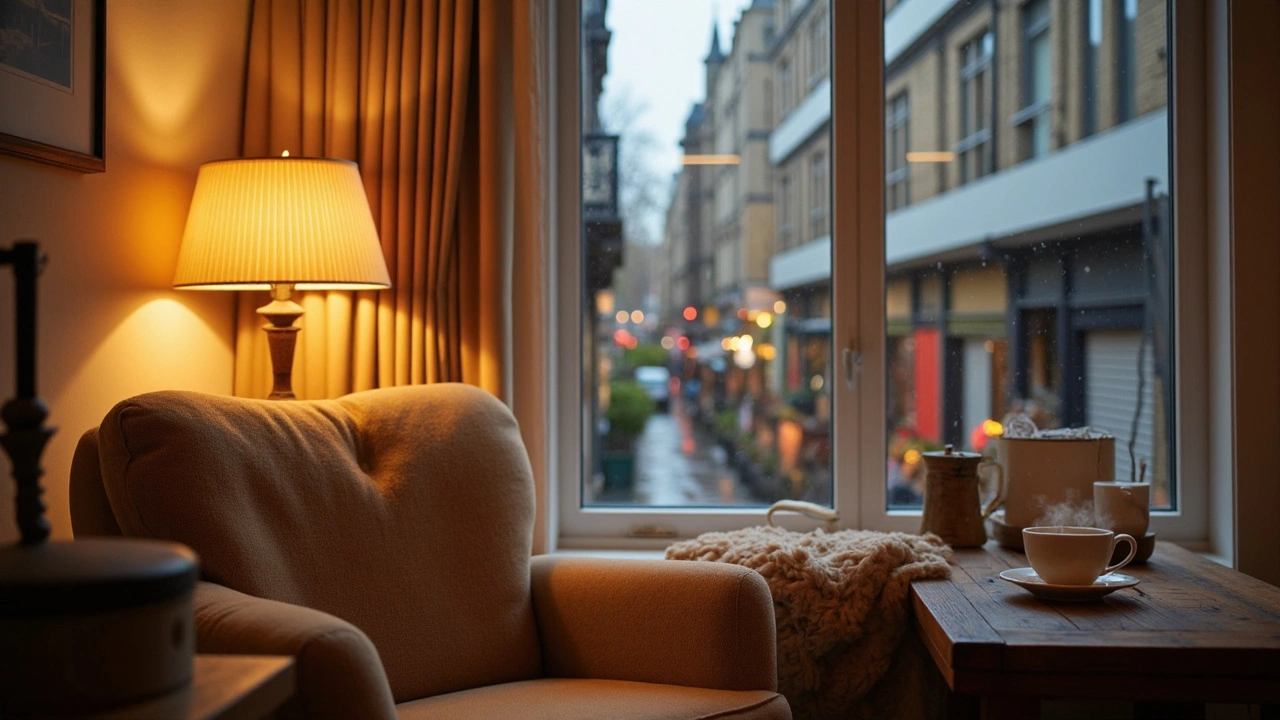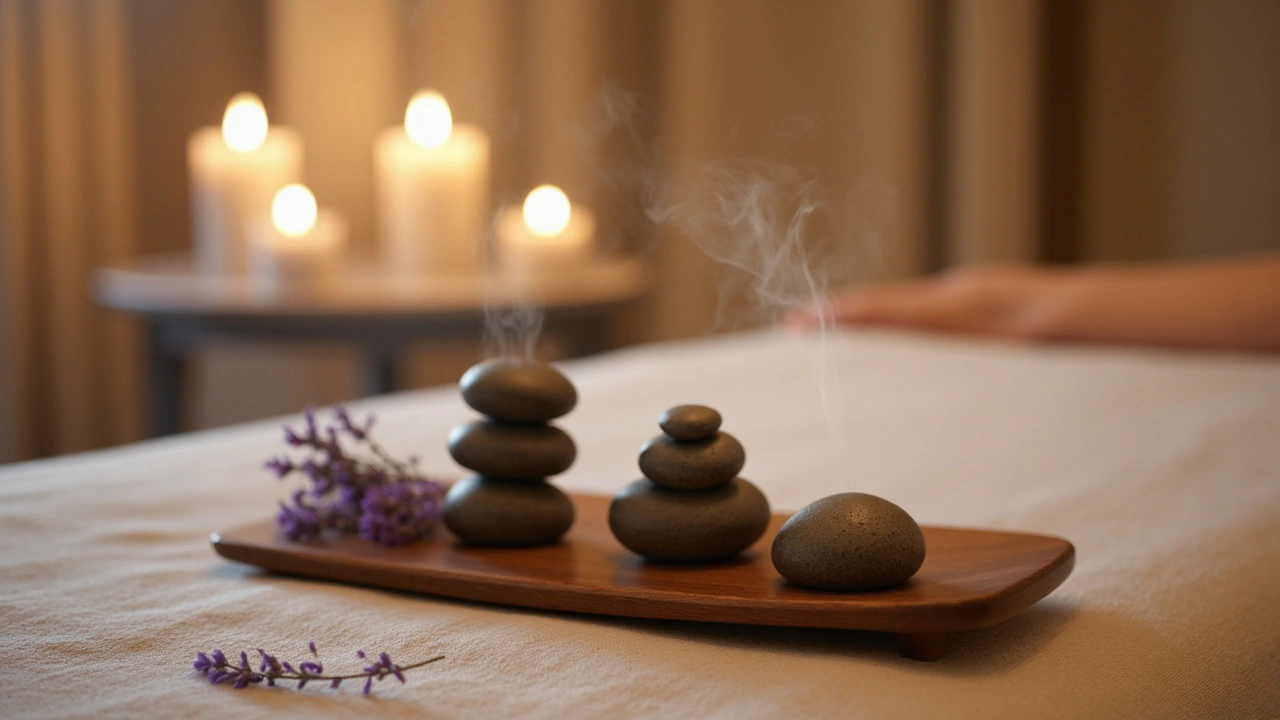Foot Massage: The Simple Way to Unwind and Recharge Fast

Your feet carry you everywhere, but they almost never get any attention—unless they start hurting. A lot of people ignore foot care until things go really wrong, but just five minutes with your hands and a little lotion can totally change your mood. A good foot massage does more than just feel nice. It gets the blood moving, helps with tired muscles, and signals your brain that it’s okay to relax.
And here's the thing: Your feet have over 7,000 nerve endings. That’s more than you’d expect, right? When you press or rub those in the right way, it can actually calm you down fast. Simple moves—like rubbing the arch, kneading the ball of your foot, or pulling your toes gently—can help your whole body chill out. You don't need fancy equipment. All you need are your own hands, a comfortable chair, and maybe a bit of lotion or oil if you want to go all-in.
- Why Your Feet Love a Good Massage
- Easy Techniques for Instant Relief
- Tools and Props That Make a Difference
- Common Mistakes to Avoid
Why Your Feet Love a Good Massage
Your feet are packed with more than 26 bones, 30 joints, and those 7,000 nerve endings everyone keeps talking about. That network sends messages all the way up your body, so what happens to your feet doesn't stay in your feet. That’s why a foot massage does so much more than just make your toes feel good—it sends a signal from your soles up to your head to relax and reset.
When you work on your feet, you boost blood circulation. This matters because a lot of us spend hours sitting at a desk or standing in one spot, making blood flow slower in our feet. A quick massage gets things moving again, bringing fresh oxygen and nutrients to tired muscles. Some folks even say regular foot rubs can help with swelling and keep feet from feeling heavy at the end of the day.
Another cool fact is that a foot massage can make a big dent in stress. There’s actual research out of the University of Brighton showing that a ten-minute foot rub lowers anxiety and can help people sleep better. It’s not magic—just good, old-fashioned science about how the body calm downs when the right nerves are triggered.
If you deal with foot pain from plantar fasciitis, running, or just long days on your feet, even simple massage moves can take the edge off. Massaging the arch, heel, and even toes can ease muscle tightness and break up those crunchy, stiff spots.
To sum up: your feet do a ton for you, and a short, focused massage gives them direct relief, while also sending good vibes through the rest of your body. It’s self-care that actually does double duty.
Easy Techniques for Instant Relief
You don’t need to be a professional to give a good foot massage. There are easy moves you can use right at home to melt away tension and help your feet bounce back. The trick is to use steady pressure, pay attention to what feels good, and not rush things.
Here’s a quick list of go-to techniques anyone can try:
- Thumb Press: Start by sitting comfortably. Use your thumbs to press in circles along the bottom of your heel and work up toward your toes. If you find a sore spot, pause there for a few seconds to help loosen it up.
- Toe Pulls: Gently hold each toe and pull it outward, giving a small wiggle at the end. This can help anyone who stands or walks a lot during the day.
- Arch Rub: Place your fingers on top of your foot and your thumb on the arch. Rub back and forth, working from the ball of your foot down to your heel.
- Ball Roll: Grab a tennis ball or even a water bottle. Roll your foot on it while sitting or standing, pressing down enough to feel relief but not pain.
If you’re wondering how long to do this, shoot for 5 to 10 minutes per foot, which studies say is enough to drop stress levels and boost your mood by as much as 40%. If you live with plantar fasciitis, a 2023 health survey showed that daily foot massage can improve pain and walking ability in over 60% of people.
| Technique | What It Helps | Recommended Time (per foot) |
|---|---|---|
| Thumb Press | General tension, circulation | 2-3 min |
| Toe Pulls | Toe joint stiffness | 1 min |
| Arch Rub | Arch pain, sore feet | 2-3 min |
| Ball Roll | Plantar fasciitis, overall ache | 3-5 min |
The main thing? Listen to your body. If it feels good, keep going. If anything hurts or feels wrong, back off the pressure. Massage should never leave you limping—it’s all about making your feet (and the rest of you) feel lighter after a busy day.

Tools and Props That Make a Difference
If you’re ready to step up your foot massage game, there’s a bunch of easy-to-find tools that can help. These aren’t just for the spa crowd—even physical therapists use them because they work. Let’s look at what actually makes a difference for regular people, not just athletes or pros.
Foot rollers, massage balls, and electric massagers can take a lot of work off your hands. Foot rollers are shaped to hit all those hard-to-reach spots—you just roll your foot back and forth and feel the tension melt away. A tennis ball or lacrosse ball works well too, and lots of folks already have one lying around. If you’re into gadgets, electric foot massagers have become super popular. They use pressure, vibration, or heat, and you can find decent models for under $100. According to the American Podiatric Medical Association:
“Tools like massage rollers can boost circulation and help relieve foot pain when used right—even for just a few minutes per session.”
If you want to try something simple, a basic foot soak bucket or basin can make a difference. Adding Epsom salt helps with swelling and soreness—a cheap trick that works surprisingly well.
- Foot rollers: Great for arch and heel pain, easy to use when sitting.
- Massage balls: Good for pinpoint pressure, works out knots around toes and balls of the foot.
- Electric foot massagers: Do most of the heavy lifting while you relax, especially good for people with chronic foot fatigue.
- Simple basin/Epsom salt: Cheap setup for a relaxing soak, softens skin, and preps feet for massage.
Some people like using body lotion or light oil. Coconut oil, for example, is slippery enough for a smooth glide but soaks in without leaving you greasy. Not a fan of scented stuff? Unscented lotion is always an easy win.
Here's a quick glance at what each tool can do for you:
| Tool/Prop | Main Benefit | Average Price Range (USD) |
|---|---|---|
| Foot Roller | Relieves arch tension, boosts blood flow | $10 - $25 |
| Massage Ball | Targets knots, small muscle relief | $5 - $15 |
| Electric Massager | Hands-free deep kneading, heat option | $40 - $150 |
| Soak Basin + Epsom Salt | Reduces swelling, softens skin | $10 - $20 |
No tool does it all, but using even just one can turn a boring evening into something your feet (and your brain) will appreciate—especially after a long day on them.
Common Mistakes to Avoid
It’s easy to think a foot massage is foolproof, but a lot of folks miss the mark with some avoidable errors. Let’s clear up a few habits that can keep you from getting the best results—from technique to timing.
- Going too rough or too gentle. Pressing too hard can leave feet aching, not relaxed. On the flip side, super-light rubs don’t do much for muscles or circulation. The sweet spot? Use steady, moderate pressure and adjust if it feels painful or ticklish.
- Ignoring the whole foot. Don’t just work the heel or the arch—give some love to the toes, balls of the feet, and even the sides. Each part plays a role in how your feet (and the rest of you) feel.
- Rushing the process. A quick 30-second rub won’t cut it. Take your time—five to ten minutes per foot gets things moving and makes it much more relaxing. Set the mood with soft light or a comfy chair if you can.
- Skipping hygiene. It sounds obvious, but clean feet are a must. Otherwise, you risk spreading bacteria or fungus, especially if you’re sharing equipment or giving massages to someone else.
- Not checking for injuries. If you have cuts, sores, athlete’s foot, or even a twisted ankle, a massage can make things worse. Always scan for anything unusual before you start.
A surprising fact: nearly 75% of people deal with foot problems in their life—so using bad technique can actually add to the problem. Stick to solid habits, stay mindful, and always listen to what your feet (or your friend’s feet) are telling you during a massage.



